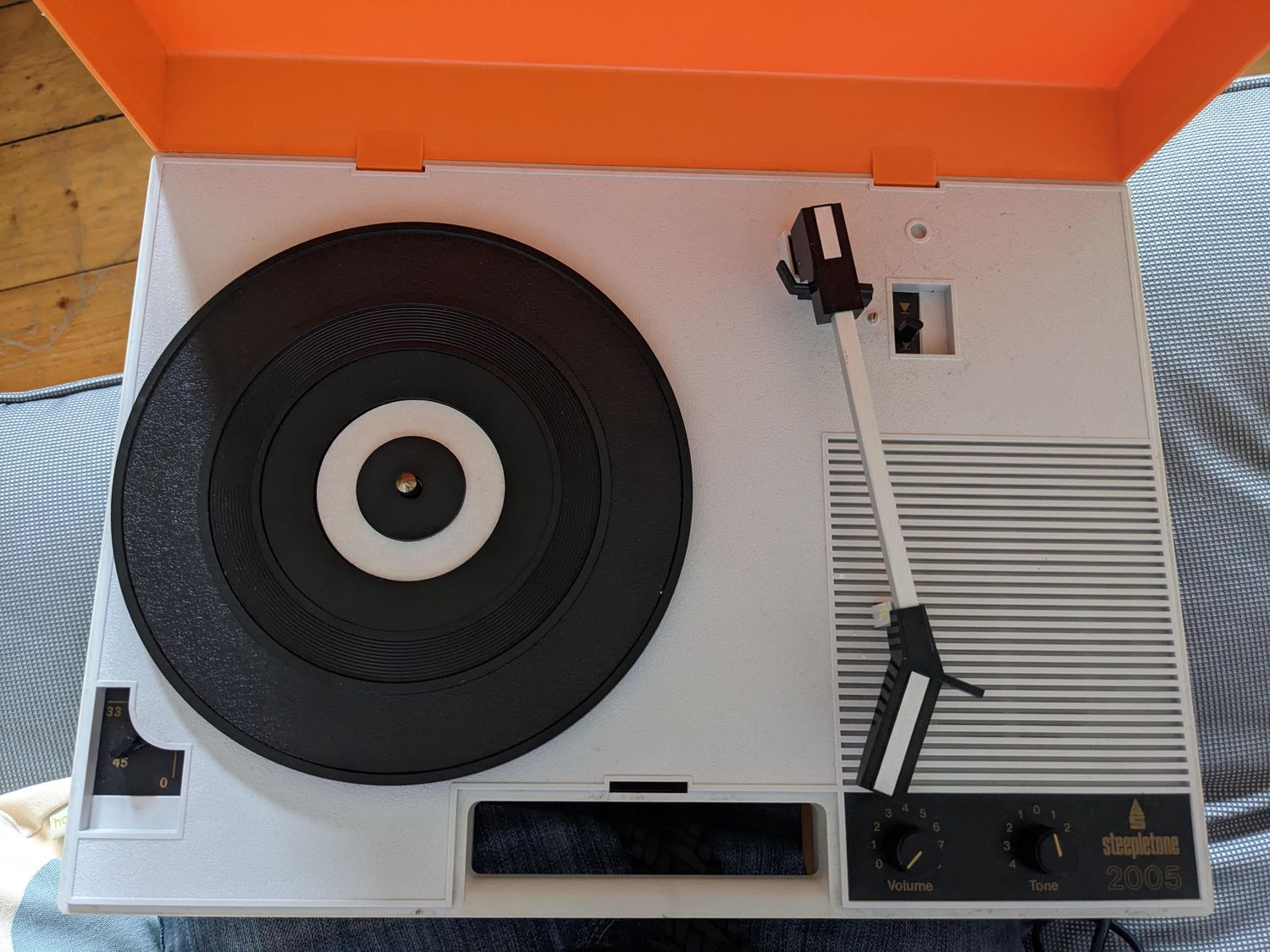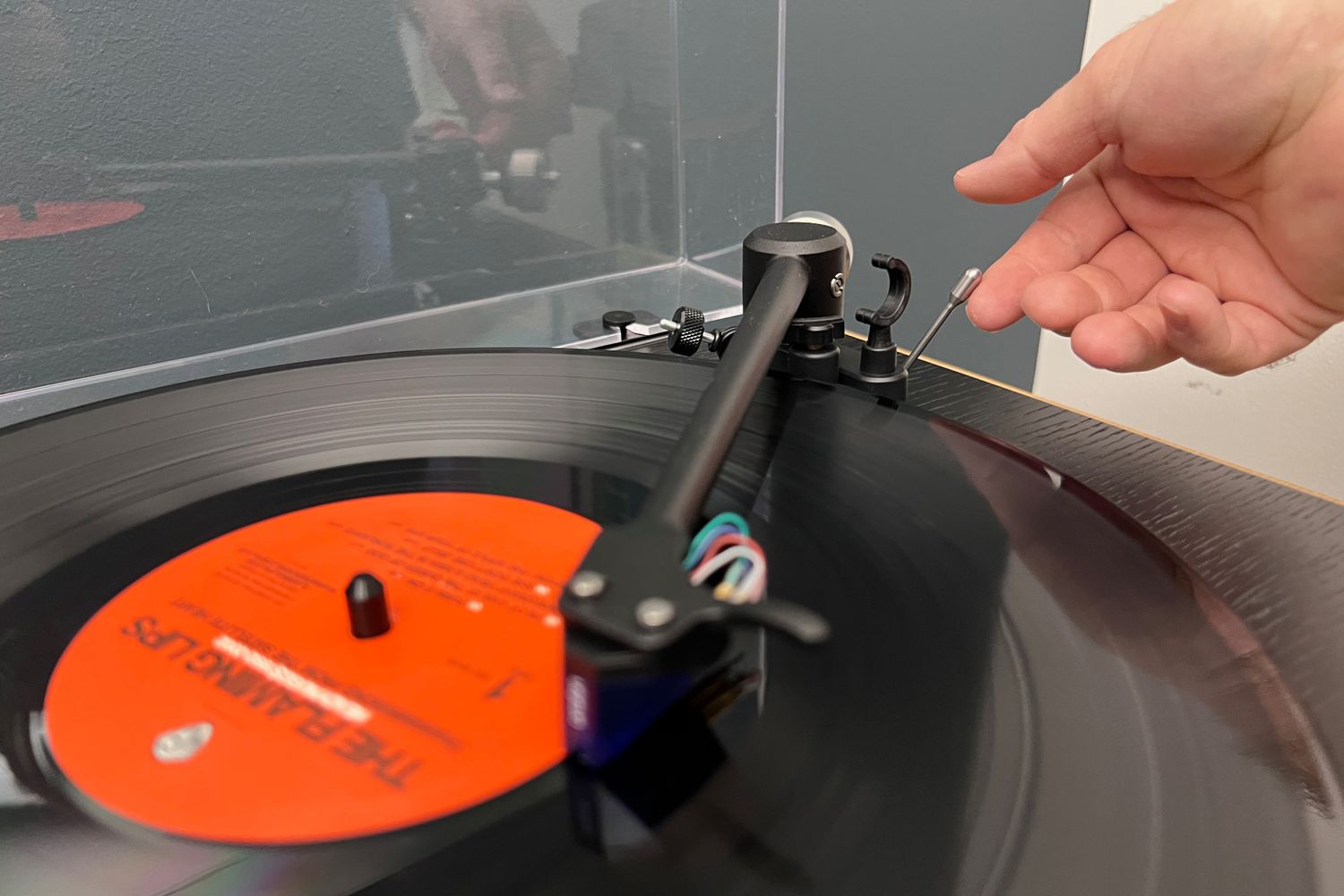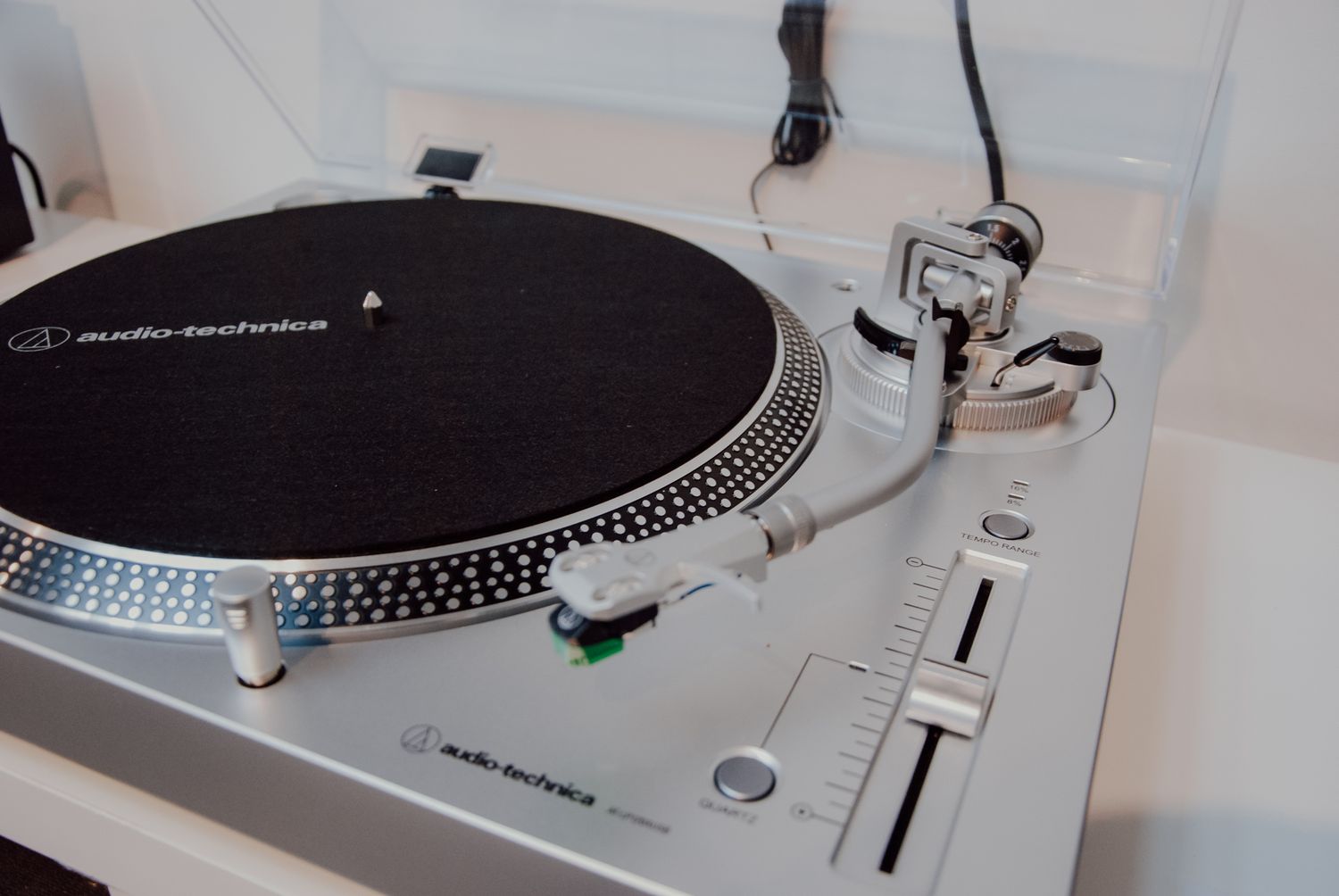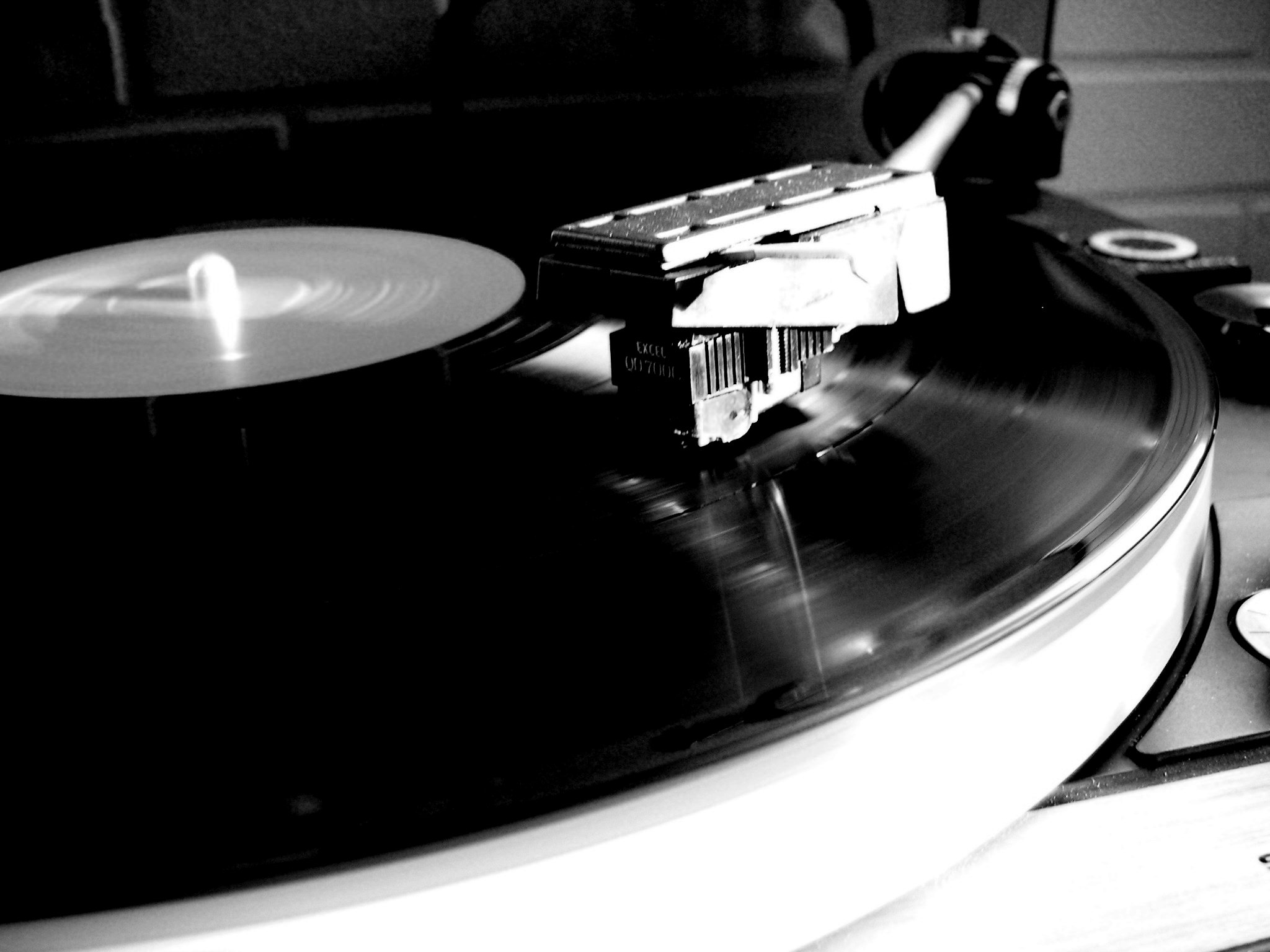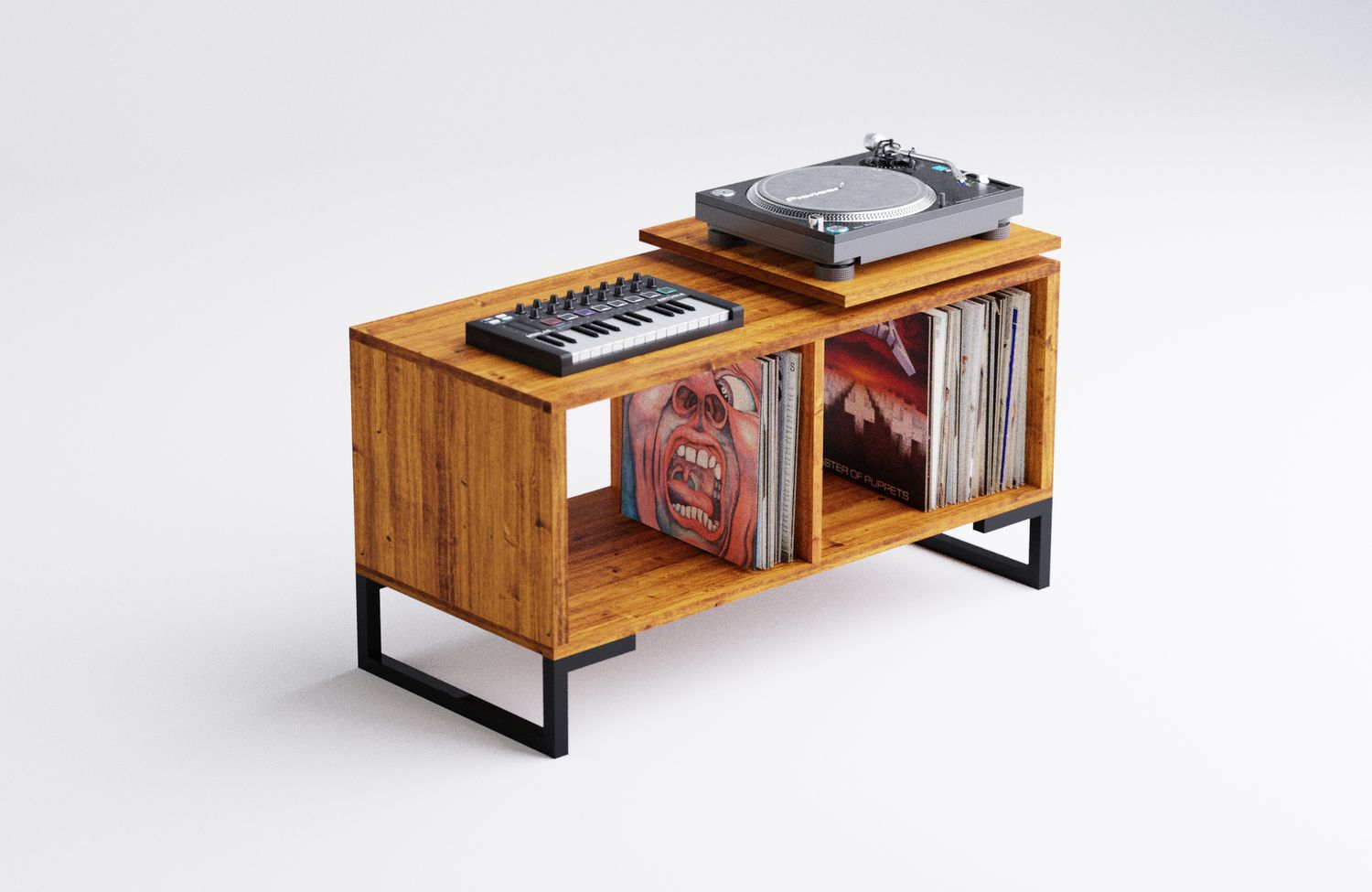Home>Devices & Equipment>Turntable>What Is A Turntable Cartidge
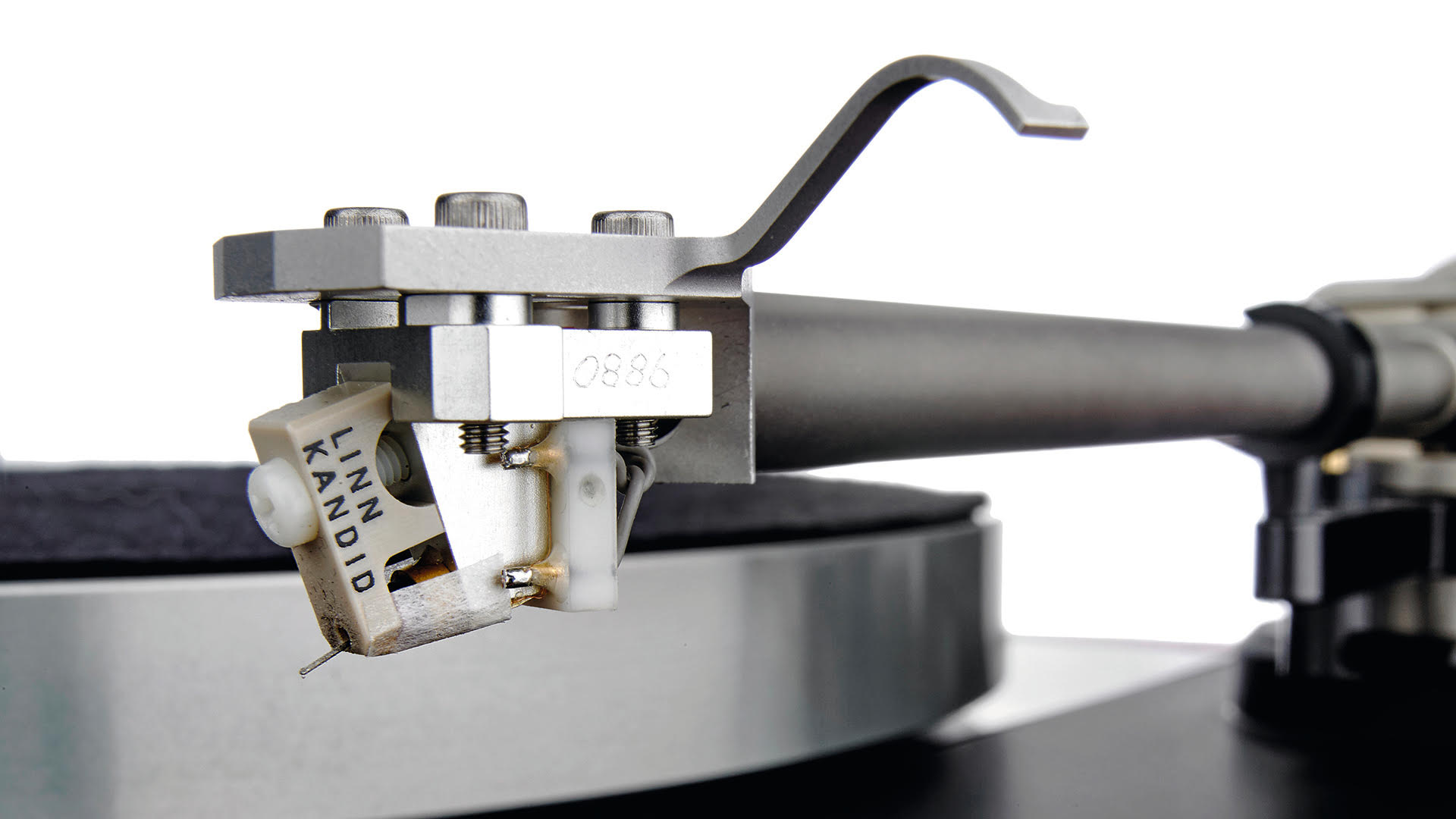

Turntable
What Is A Turntable Cartidge
Modified: January 22, 2024
Looking for a turntable cartridge? Read our comprehensive guide on what a turntable cartridge is, its importance, and how to choose the right one for your turntable setup.
(Many of the links in this article redirect to a specific reviewed product. Your purchase of these products through affiliate links helps to generate commission for AudioLover.com, at no extra cost. Learn more)
Table of Contents
- What Is A Turntable Cartridge
- Introduction
- Definition of a Turntable Cartridge
- Components of a Turntable Cartridge
- Types of Turntable Cartridges
- How a Turntable Cartridge Works
- Importance of a Quality Turntable Cartridge
- Factors to Consider When Choosing a Turntable Cartridge
- Installation and Maintenance of a Turntable Cartridge
- Troubleshooting Common Issues with a Turntable Cartridge
- Conclusion
What Is A Turntable Cartridge
A turntable cartridge is a crucial component of a vinyl record player, responsible for converting the physical grooves on a record into electrical signals that can be amplified and played through speakers. It is essentially a small device that houses a stylus or needle, which tracks the grooves of the record, and a cartridge that contains the coils and magnets necessary for generating the electrical signals.
The cartridge is typically mounted on the tonearm of the turntable, which holds the stylus in place and allows it to move across the record’s surface. As the stylus follows the contours of the grooves, it vibrates, and these vibrations are then transformed into electrical signals by the cartridge.
When it comes to choosing a turntable cartridge, there are several factors to consider. Firstly, the type of cartridge can vary, including moving magnet (MM) cartridges and moving coil (MC) cartridges. MM cartridges are more common and generally offer good performance, while MC cartridges are known for their higher fidelity but require a compatible phono preamp.
Additionally, the stylus shape and material can affect the sound quality and the lifespan of both the stylus and the records. Common stylus shapes include spherical, elliptical, and microline, each offering different levels of precision and wear on the records.
Overall, the turntable cartridge is a crucial element in the playback process of vinyl records. A high-quality cartridge can greatly enhance the audio fidelity and overall listening experience, allowing you to fully appreciate the nuances and details of your vinyl collection.
Introduction
Turntables have come back into popularity in recent years, as music enthusiasts rediscover the warm and immersive sound quality of vinyl records. These iconic record players rely on a combination of mechanical and electrical components to reproduce the audio recorded on vinyl discs. One of the most critical elements in the turntable setup is the cartridge.
In this article, we will delve into the world of turntable cartridges, exploring their purpose, components, types, and importance. Whether you’re a seasoned vinyl aficionado or just starting your journey into the world of analog music, understanding turntable cartridges will enhance your appreciation of the vinyl listening experience.
We will begin by defining a turntable cartridge and explaining its role in the playback process. From there, we will explore the key components that make up a cartridge and the different types available in the market. Understanding how a turntable cartridge works is crucial in evaluating their quality and performance.
Next, we will discuss the importance of investing in a high-quality turntable cartridge. While it may be tempting to overlook this component in the overall setup, a good cartridge can make a significant difference in the sound reproduction and fidelity of your records.
Choosing the right turntable cartridge can be a daunting task, given the wide range of options available. We will provide guidance on the factors to consider, including stylus shape, material, and compatibility with your turntable setup.
Installation and maintenance of a turntable cartridge are also essential aspects to consider to ensure optimal performance and longevity. We will provide tips and guidelines to help you properly install and care for your cartridge, maximizing its lifespan and performance.
Lastly, we will address common issues that may arise with turntable cartridges and provide troubleshooting tips to help you overcome these challenges. Having a basic understanding of how to identify and resolve cartridge-related problems will save you time and frustration along the way.
By the end of this article, you will have a comprehensive understanding of turntable cartridges and their importance in the vinyl listening experience. Whether you are a beginner or a seasoned enthusiast, this knowledge will empower you to make informed decisions when it comes to selecting, installing, and maintaining your turntable cartridge.
Definition of a Turntable Cartridge
A turntable cartridge is a small device that is an essential component of a vinyl record player. It is responsible for converting the physical grooves on a record into electrical signals that can then be amplified and played through speakers. In simple terms, the cartridge is what allows you to hear the music on your vinyl records.
The turntable cartridge consists of two main parts: the stylus or needle and the cartridge itself. The stylus is the small, pointed piece that makes direct contact with the record. It is usually made of a diamond or another hard material to ensure durability and accuracy. The stylus tracks the grooves of the record, following the contours of the audio recording encoded on the vinyl.
The cartridge, on the other hand, is the housing that holds the stylus and contains the coils and magnets necessary for generating the electrical signals. These signals are produced when the stylus vibrates as it navigates the grooves of the record. The vibrations induce electrical currents in the coils of the cartridge, which are then sent to the preamp or amplifier for further processing and amplification.
It is worth noting that turntable cartridges come in various types and designs, each with its own characteristics and sonic qualities. The most common types are moving magnet (MM) cartridges and moving coil (MC) cartridges. MM cartridges are more affordable and widely available, making them a popular choice for many vinyl enthusiasts. MC cartridges, on the other hand, offer higher fidelity but are often more expensive and require a compatible phono preamp.
Overall, the turntable cartridge is a crucial component that directly affects the sound quality of your vinyl playback. The combination of a high-quality stylus and a well-designed cartridge is essential for accurately reproducing the audio recorded on vinyl records. By understanding the function and importance of the turntable cartridge, you can make informed choices when selecting and maintaining this critical component of your turntable setup.
Components of a Turntable Cartridge
A turntable cartridge consists of several key components that work together to convert the physical grooves on a vinyl record into electrical signals. Understanding these components is essential in evaluating the performance and quality of a cartridge. Let’s take a closer look at each component:
- Stylus: The stylus is the needle-like tip that directly contacts the grooves on the record. It is typically made of a diamond or other hard material to ensure precise tracking and minimal wear on the record. The shape and profile of the stylus can vary, with common types including spherical, elliptical, and microline. Different stylus shapes offer varying levels of accuracy and contact area with the record’s grooves.
- Cartridge Body: The cartridge body houses the internal components and provides support and protection for the stylus. It is usually made of lightweight materials like plastic or aluminum to reduce unwanted resonance and vibration. The design of the cartridge body can also contribute to the overall sound characteristics of the cartridge.
- Coils and Magnets: Inside the cartridge, there are tiny coils of wire and magnets that work together to generate the electrical signals. As the stylus moves across the grooves, it vibrates, causing the coils and magnets to interact and generate tiny electrical currents. These electrical signals represent the audio information contained in the record’s grooves.
- Cantilever: The cantilever is a slender structure that connects the stylus to the cartridge body. It acts as a conduit for the vibrations picked up by the stylus, transmitting them to the coils and magnets. The material and design of the cantilever can impact the overall performance and sound characteristics of the cartridge.
- Mount: The mount refers to the mechanism by which the cartridge attaches to the tonearm of the turntable. Different mounts exist, including standard mount (also known as half-inch mount) and P-mount (also known as T4P mount). The choice of mount depends on the compatibility of the cartridge and the turntable.
All of these components work together harmoniously to capture the audio information on the vinyl record and transform it into electrical signals. The quality and design of these components play a significant role in the overall performance and sound reproduction capabilities of the turntable cartridge.
Types of Turntable Cartridges
When it comes to turntable cartridges, there are several types available in the market, each with its own characteristics and sonic qualities. Understanding the different types can help you make an informed decision when selecting a cartridge for your turntable setup. Here are the main types of turntable cartridges:
- Moving Magnet (MM) Cartridges: Moving magnet cartridges are the most common type of turntable cartridge. They feature a magnet that moves and is attached to the stylus. The magnet generates electrical signals as it vibrates in response to the grooves on the record. MM cartridges are known for their versatility, affordability, and ease of use. They are compatible with a wide range of turntables and do not require specialized preamps.
- Moving Coil (MC) Cartridges: Moving coil cartridges are considered high-end and offer superior sound quality. They have a coil attached to the stylus that moves within a fixed magnet structure. The coil generates electrical signals as it vibrates in response to the record grooves. MC cartridges require a phono preamp with a specific input impedance to function properly. They are known for their detailed and accurate sound reproduction but tend to be more expensive than MM cartridges.
- Specialty Cartridges: In addition to MM and MC cartridges, there are specialty cartridges designed for specific applications. These can include cartridges optimized for DJ performance with enhanced tracking capabilities, cartridges designed for 78 RPM records, and even cartridges tailored for specific genres or audio preferences. Specialty cartridges cater to specific needs and can offer unique features to enhance your vinyl listening experience.
- Cartridge Upgrades: Another option to consider is upgrading the cartridge on your turntable. Many turntables come with entry-level cartridges that may not provide the best sound quality. Upgrading to a higher-quality cartridge can significantly enhance the audio performance of your turntable. However, it is crucial to ensure compatibility with your turntable’s tonearm and setup.
When choosing a turntable cartridge, it’s important to consider factors such as your budget, desired sound quality, compatibility with your turntable, and any specific requirements or preferences you may have. It’s also a good idea to consult with experts or read reviews to get a better understanding of the performance and characteristics of different cartridges.
Ultimately, the choice of turntable cartridge type will depend on your personal preferences and priorities when it comes to sound quality, convenience, and budget. Selecting the right cartridge can greatly enhance your vinyl listening experience and ensure the faithful reproduction of your beloved record collection.
How a Turntable Cartridge Works
A turntable cartridge is a marvel of engineering, as it transforms the physical grooves on a vinyl record into electrical signals that can be amplified and played through speakers. Understanding the inner workings of a turntable cartridge can deepen your appreciation for the technology involved. Here’s a simplified explanation of how a turntable cartridge works:
1. Stylus Engagement: The process begins when the stylus, which is the needle-like tip of the cartridge, makes contact with the grooves on the vinyl record. The stylus is typically made of a hard material, such as diamond, and is carefully shaped to match the contour of the grooves.
2. Stylus Vibration: As the record spins, the stylus vibrates and moves laterally within the record’s grooves. These vibrations are the result of the modulations within the grooves, which contain the audio information. The stylus must accurately track the grooves to capture these vibrations faithfully.
3. Coil and Magnet Interaction: Inside the cartridge, there are coils of wire and magnets that work together to generate the electrical signals. The stylus is attached to a cantilever, which is connected to the coils. As the stylus moves back and forth within the grooves, it causes the cantilever to vibrate, thus inducing changes in the magnetic field created by the magnets.
4. Electrical Current Generation: The vibrations of the cantilever and the changes in the magnetic field generate tiny electrical currents in the coils. These electrical signals accurately represent the audio information encoded on the vinyl record. The intensity and frequency of these electrical signals correspond to the variations in the grooves.
5. Signal Transmission: The generated electrical signals are then sent to the phono preamplifier, also known as a phono stage or phono amp. The preamp boosts and equalizes the signals to match the line-level inputs of the amplifier or receiver. From there, the signals can be processed and amplified for playback through speakers or headphones.
6. Sound Reproduction: The amplified electrical signals are ultimately converted back into sound waves by the speakers. These sound waves faithfully reproduce the original audio recording, bringing the music to life.
It is worth noting that the quality and design of the cartridge, including the stylus shape, material, and the overall construction, can greatly influence the accuracy and fidelity of the reproduced sound. A well-designed and properly aligned cartridge will ensure optimal tracking of the grooves, minimizing distortion and preserving the delicate nuances of the music.
By understanding the intricate process of how a turntable cartridge works, you can appreciate the precision and craftsmanship behind this critical component of the vinyl playback system. The careful engineering of a cartridge allows us to experience the rich, warm sound that vinyl records are cherished for.
Importance of a Quality Turntable Cartridge
A quality turntable cartridge is a crucial component for achieving optimal sound reproduction and preserving the integrity of your vinyl records. It plays a significant role in the overall performance and enjoyment of the vinyl listening experience. Here are the key reasons why a quality turntable cartridge is important:
1. Accurate Sound Reproduction: A high-quality cartridge ensures accurate tracking of the grooves on the vinyl record. It accurately translates the physical movement of the stylus within the grooves into electrical signals, faithfully capturing the audio information embedded in the record. This accurate sound reproduction allows you to hear the music as the artist intended, with all the nuances, dynamics, and details preserved.
2. Minimal Record Wear: A well-designed and properly aligned cartridge will have minimal impact on the condition and longevity of your vinyl records. The stylus of a quality cartridge is constructed with precision and made of durable materials, reducing unnecessary wear and tear on the delicate vinyl surface. This helps to preserve the life of your records and ensures that they can be enjoyed for years to come.
3. Enhanced Fidelity: A quality turntable cartridge can significantly enhance the overall sound fidelity. With better tracking ability and improved frequency response, you can experience a wider range of audio frequencies, capturing the full spectrum of the music. This heightened fidelity adds depth, clarity, and realism to the sound, allowing you to fully immerse yourself in your vinyl collection.
4. Reduced Distortion: Distortion can greatly diminish the quality of the audio playback. A quality cartridge will have low distortion levels, ensuring that the signals generated by the stylus accurately represent the original recording. This results in a cleaner, more transparent sound, free from unwanted artifacts and distortions that can compromise the listening experience.
5. Compatibility and Upgrade Potential: Investing in a quality turntable cartridge ensures compatibility with a wide range of turntables and tonearms. This enables you to upgrade your setup in the future without having to replace the cartridge. Additionally, many high-quality cartridges offer the possibility of stylus upgrades, allowing you to tailor the sound to your preferences or adapt to different genres of music.
6. Listening Pleasure: Ultimately, a quality turntable cartridge enhances your listening pleasure. It brings out the richness and warmth of vinyl records, allowing you to experience the true essence of the music. The details, dynamics, and subtleties of the recordings become more evident, immersing you in a captivating and engaging sonic experience.
Choosing a quality turntable cartridge is therefore essential for anyone who appreciates the depth and character of vinyl records. It ensures accurate sound reproduction, minimizes record wear, enhances fidelity, reduces distortion, offers compatibility and upgrade potential, and ultimately maximizes your listening pleasure. By investing in a quality cartridge, you are investing in the preservation and enjoyment of your vinyl collection.
Factors to Consider When Choosing a Turntable Cartridge
When selecting a turntable cartridge, there are several important factors to consider to ensure optimal performance and compatibility with your turntable setup. These factors can greatly impact the sound quality, tracking ability, and overall enjoyment of your vinyl listening experience. Here are the key factors to keep in mind when choosing a turntable cartridge:
- Cartridge Type: Determine whether you prefer a moving magnet (MM) or moving coil (MC) cartridge. MM cartridges are more common, affordable, and easy to use, while MC cartridges offer higher fidelity but can be more expensive and require a phono preamp with specific impedance matching.
- Stylus Shape and Material: Consider the shape and material of the stylus, as this can impact the sound quality and record wear. Common stylus shapes include spherical, elliptical, and microline. Spherical styli are more forgiving for record wear, while elliptical and microline styli offer improved tracking ability and accuracy.
- Compatibility: Ensure that the cartridge is compatible with your turntable’s tonearm and mount type. Check the specifications and recommendations provided by the turntable manufacturer or consult with experts to ensure a proper fit and alignment.
- Tracking Force and Compliance: Consider the recommended tracking force range for the cartridge and ensure that it aligns with your turntable’s tonearm capabilities. Also, pay attention to the compliance, which determines the cartridge’s ability to react to the record’s surface and vibrations. Choosing a cartridge with the appropriate tracking force and compliance will help prevent excessive record wear and improve tracking accuracy.
- Output Level: The output level of the cartridge should match the sensitivity of your phono stage or amplifier. Some cartridges have higher output levels, while others have lower output levels. Matching the cartridge’s output level with the appropriate phono preamp will ensure proper signal amplification and avoid signal distortion or low volume issues.
- Budget: Determine your budget range for the cartridge. Cartridges vary significantly in price, with entry-level options being more affordable and high-end models commanding a higher price tag. Set a budget that allows you to balance your desired sound quality and features with your financial considerations.
It is also beneficial to read reviews and seek recommendations from trusted sources or turntable enthusiasts. Gathering insights from experienced individuals can help you make an informed decision and identify cartridges that excel in specific areas, such as sound quality, tracking ability, or specialized applications.
Ultimately, choosing the right turntable cartridge involves finding a balance between your preferences, budget, and the compatibility with your turntable setup. By carefully considering these factors, you can select a cartridge that offers excellent performance, enhances the fidelity of your vinyl records, and provides a pleasurable listening experience.
Installation and Maintenance of a Turntable Cartridge
Proper installation and maintenance of a turntable cartridge are essential for optimal performance and longevity. Here are some important considerations when it comes to installing and maintaining your cartridge:
Installation:
- Tools and Materials: Gather the necessary tools, including a screwdriver, alignment protractor, stylus force gauge, and other accessories recommended by the cartridge manufacturer. Ensure you have a clean and well-lit area to work in.
- Mounting: Follow the manufacturer’s instructions to properly install the cartridge onto your turntable’s tonearm. Make sure the cartridge is secure and aligned correctly. Improper alignment can lead to tracking errors and compromised sound quality.
- Tracking Force: Use a stylus force gauge to set the appropriate tracking force for your cartridge. Follow the manufacturer’s recommended range to ensure accurate tracking without putting excessive pressure on the stylus or record grooves.
- Anti-Skate: Adjust the anti-skate mechanism on your turntable to counterbalance the inward force exerted on the stylus during playback. This helps maintain proper tracking and reduces excessive wear on one side of the stylus or record grooves.
- Alignment: Use an alignment protractor to ensure the cartridge is aligned properly in relation to the pivot point of the tonearm. Proper alignment contributes to accurate tracking and optimal sound quality.
- Wiring: Connect the cartridge’s wiring to the appropriate terminals on your turntable’s tonearm. Follow the instructions or consult the user manual to ensure correct wiring connections.
Maintenance:
- Cleaning: Regularly clean the stylus using a stylus brush or cleaning solution designed for cartridge maintenance. Gently brush away any dust or debris that may accumulate to prevent it from affecting the stylus’s performance.
- Record Care: Handle your vinyl records with care to avoid introducing dust, fingerprints, or scratches. Keeping the records clean and free from debris will minimize the accumulation of dirt on the stylus.
- Replacement Stylus: If your cartridge has a replaceable stylus, follow the manufacturer’s guidelines for lifespan and replacement intervals. A worn or damaged stylus can lead to poor audio quality and potential damage to your records.
- Turntable Setup: Ensure that your turntable setup is properly calibrated and adjusted. This includes checking the tonearm balance, adjusting the tracking force, and verifying the anti-skate settings. Regularly inspect and clean the turntable’s platter, tonearm, and other components.
- Storage: When not in use, protect your turntable and cartridge by using a dust cover or storing them in a clean and dust-free environment. This helps prevent the buildup of dust and debris on critical components.
Remember to refer to the specific manufacturer’s instructions for your cartridge and turntable, as each brand and model may have unique requirements and specifications. Additionally, it’s a good idea to consult with knowledgeable experts or refer to reputable resources for additional guidance on cartridge installation and maintenance.
Taking the time to properly install and maintain your turntable cartridge will ensure consistent and accurate performance, prolong the life of the cartridge, and help preserve the quality of your vinyl collection for years to come.
Troubleshooting Common Issues with a Turntable Cartridge
While turntable cartridges are typically reliable, you may encounter occasional issues that can affect the performance of your vinyl playback. Knowing how to troubleshoot and address common problems can help you maintain optimal sound quality. Here are some common issues with turntable cartridges and possible solutions:
- Skipping or Jumping: If your cartridge is skipping or jumping across the record, it may be due to improper tracking force or misalignment. Check that the tracking force is set correctly according to the manufacturer’s recommendations. Additionally, ensure that the cartridge is aligned properly using a protractor. If the problem persists, there may be an issue with the stylus or tonearm, and professional assistance might be necessary.
- Distorted Sound: Distorted sound can be caused by a variety of factors, including misaligned or worn-out stylus, damaged records, or issues with the tonearm setup. Check the condition of the stylus for any visible damage or wear and consider replacing it if necessary. Verify that the cartridge is properly aligned and that the tracking force is within the recommended range. If the distortion persists, cleaning the stylus and ensuring proper record care can also help improve sound quality.
- Low Volume or Muffled Sound: If you’re experiencing low volume or muffled sound, it may be a result of incorrect phono stage settings, loose cartridge wiring, or a damaged stylus. Ensure that the phono stage is set to the appropriate input level and that the cartridge wiring is securely connected. Check the stylus for any signs of damage or wear. If the problem persists, consider adjusting the tonearm height or seeking professional assistance.
- Poor Channel Separation: Poor channel separation can occur when the left and right channels are not properly balanced. Check that the stereo cartridge wiring is connected correctly to the tonearm. If the issue persists, there may be an internal problem with the cartridge, and it may require professional inspection or replacement.
- Excessive Surface Noise: Excessive noise can be caused by dirty records, a worn-out stylus, or buildup of debris on the cartridge. Clean your records with a record cleaning brush or solution to remove dust and dirt. Check the stylus for any debris or wear and clean it using a stylus brush or appropriate cleaning solution. It’s also important to keep the turntable and cartridge clean and free from dust to minimize surface noise.
If you encounter persistent issues with your turntable cartridge, it’s recommended to consult with experts or seek assistance from a professional. They can provide a thorough inspection, diagnose the problem accurately, and offer guidance on the proper course of action.
Regular maintenance and care, including keeping your records clean, aligning and balancing the cartridge correctly, and ensuring proper tracking force, can help prevent many common issues. By troubleshooting and addressing any problems promptly, you can enjoy optimal sound quality and prolong the life of your turntable cartridge.
Conclusion
A turntable cartridge plays a vital role in the vinyl listening experience, converting the physical grooves on a record into electrical signals that recreate the music. Understanding the components, types, and importance of a quality turntable cartridge is crucial for maximizing sound quality and maintaining the integrity of your vinyl collection.
From the stylus that traverses the grooves to the coils and magnets that generate electrical signals, each component plays a crucial role in accurately reproducing the audio. Whether you choose a moving magnet (MM) or moving coil (MC) cartridge, selecting the right type for your needs and preferences is key.
A quality turntable cartridge offers accurate sound reproduction, reduced record wear, enhanced sound fidelity, and compatibility with your turntable setup. By considering factors such as stylus shape and material, compatibility, tracking force, and output level, you can choose a cartridge that complements your turntable and enhances your listening experience.
Proper installation and maintenance of your turntable cartridge are essential for optimal performance. Taking the time to align the cartridge correctly, set the tracking force, and ensure clean stylus will help prevent common issues such as skipping, distortion, or poor channel separation. Regular maintenance, record care, and attention to your turntable setup will keep your cartridge in prime condition for years to come.
In closing, a quality turntable cartridge is an investment that pays off in the form of a rich and immersive vinyl listening experience. By understanding the intricacies of the cartridge, making informed choices, and maintaining it properly, you can fully appreciate the magic and soul of vinyl records.


